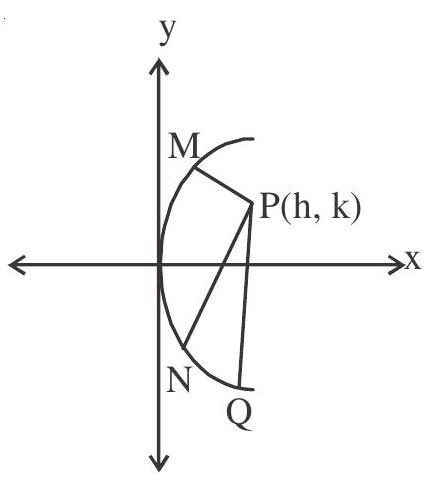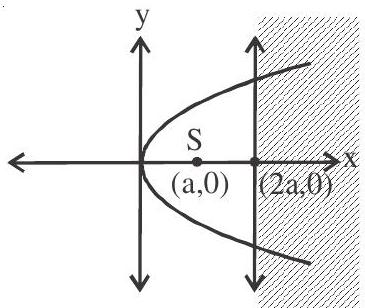PARABOLA-7
Conormal points:
Let
Equation of normal is
If passes through
Suppose

So maximum three normal say PM, PN, PQ drawn through P. Points M, N, Q are called co-normal points.
-
The algebraic sum of ordinates of the conormal points is zero. Let the coordinates of conormal points be
-
Centroid of the triangle formed by conormal points lies on the axis of parabola. Let coordinates of conormal points be
-
Normal drawn from a point
This shows that position of point

- Equation of a circle passing through the conormal points
Let
These three normals passes through point
Let equation of circle be
If the point
This equation has four roots say
that the circle passes through the points
Therefore circle passes through origin.
Now equation (2) is
Now this equation is identical with equation (1)
Equation of circle is











